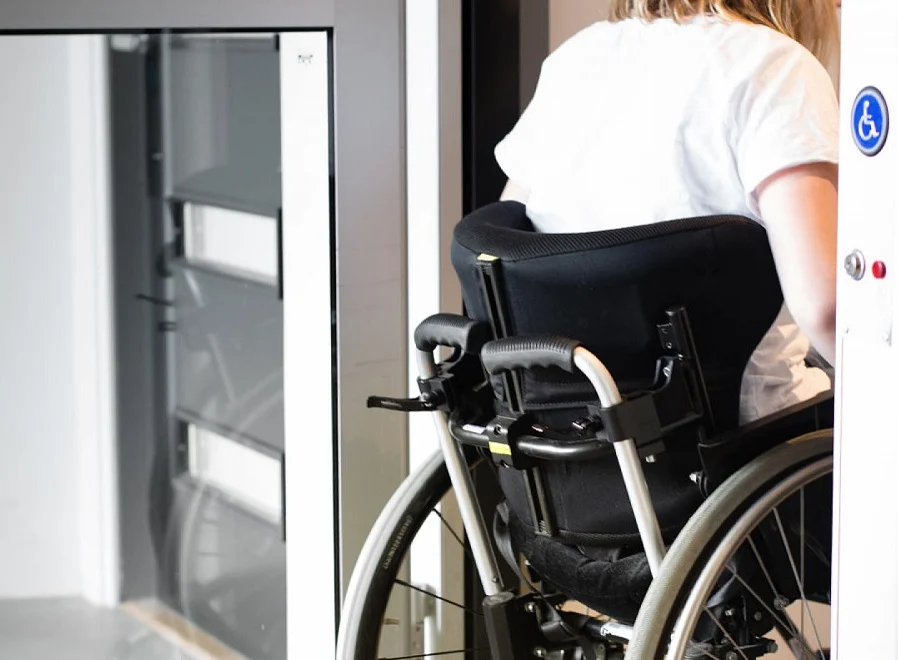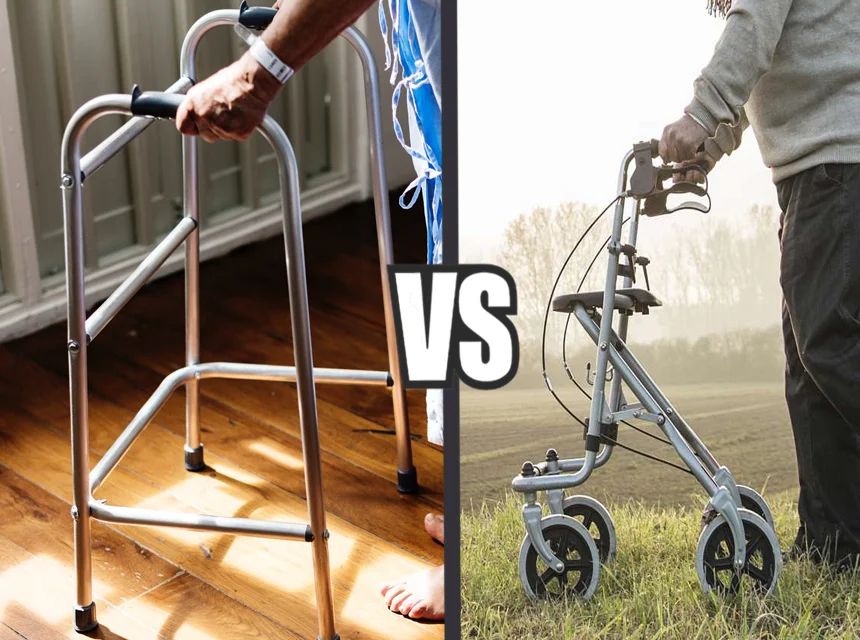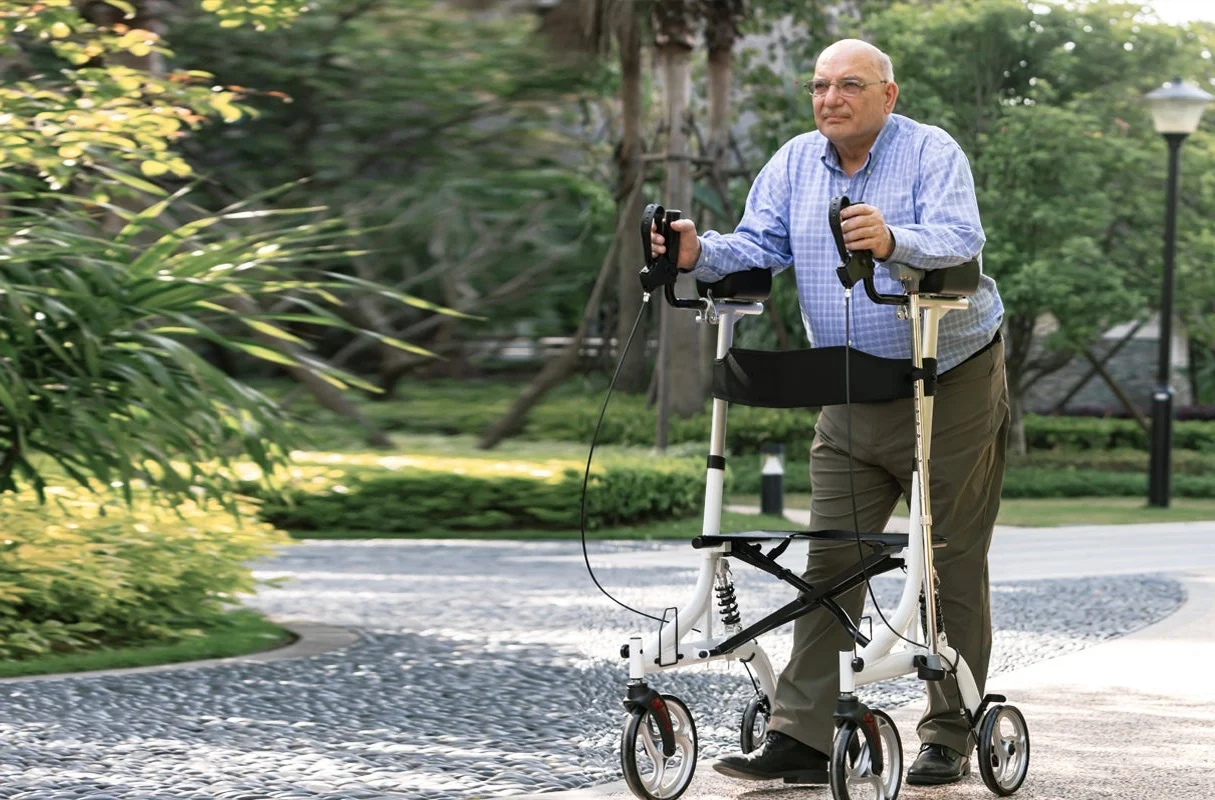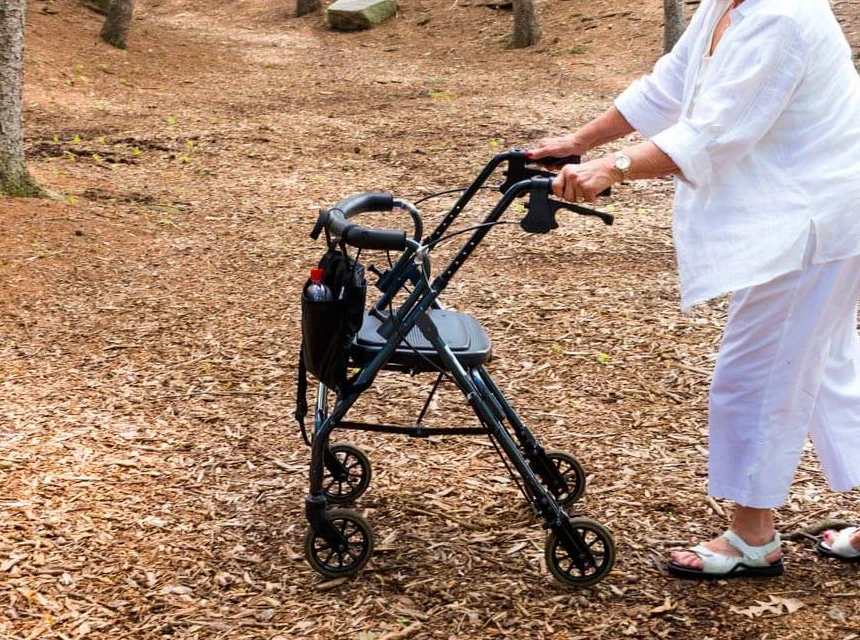If a walker or rollator with its small wheels is only used in the home as a walking aid, it is called an indoor walker, and two properties are essential. In addition to its weight, small width is necessary for the indoor walker. Therefore, this premise is the reason why many people are asking, “how wide is a walker?”
It helps to take measurements of the indoor spaces the indoor walker will be passing. You don’t want to have it delivered and then find out it’s wider than the minimum clearance width of your walking paths at home.
By Nan J.Corbo | ✅ Reviewed by Ray Butcher |
SeniorFitness is reader-supported. We may earn a commission through products purchased using links on this page. Learn more about our process here
How Wide Is a Standard Walker?
Standard walkers are typically 25 to 29 inches wide. Check out how to adjust, how to correctly use, learn the differences in a rollator vs. standard front-wheeled walker and which ones are the best.[/trusted_link], although you can find narrower models 22 to 24 inches wide. Indoor walkers are narrower, with a width of about 22 inches. They offer enough space for your feet between the rear wheels.
Even if your foot is bandaged due to an illness and wearing other bandage shoes, you can walk safely with support. Meanwhile, if you need a walker with a comfortable seat like the Health Line Stand-Assist Folding Walker, know that the width can go up to 25 inches.
Minimum and Maximum Walker Width
The minimum width for the widest sides of standard walkers is 25 inches, while you can find 12 inches models of lightweight walkers. The maximum width for the widest sides of standard walkers is 29 inches, while it’s 24 inches for light walkers.
In any case, walkers differ in their dimensions. There are standard walkers and lightweight walkers also differ in their sizes:
| Walker model | Dimensions | Minimum width | Maximum width | Weight | Maximum weight capacity |
| Standard walker | approx. 23 x 28 inches | 25 inches | 29 inches | approx. 15 to 25 pounds | up to approx. 330 pounds |
| Lightweight walker | approx. 22 x 24 inches | 12 inches | 24 inches | about 13 to 15 pounds | up to approx. 280 pounds |
What Types of Walkers Are There?
Walkers are often differentiated based on their mobility features: the presence and number of tires. The classic walkers are just the walking frames with four feet. Then there are foldable models or rollator walkers so how do you choose the best mobility device? Do you need a walker or a rollator? What’s the difference? You can get rollator’s with three or four wheels, and walkers with two wheels and two extended metal feet. There are also manual walkers and electric rollator walkers, just like wheelchairs. Finally, there are upright walkers for seniors who don’t want to bend while walking.
Four- and Three-Wheelers
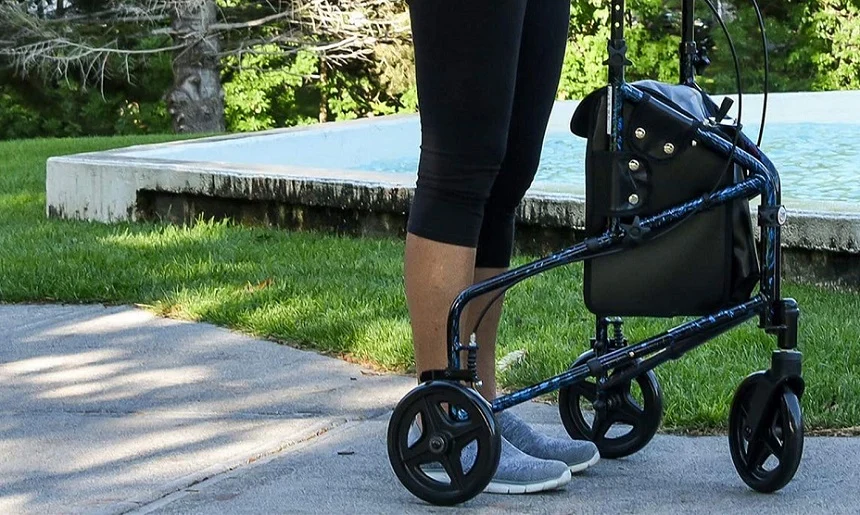
A rollator walker with four wheels or three wheels is relatively easy to maneuver. However, each walker model with 3 or 4 wheels must be equipped with brake handles to guarantee optimal safety. The brake handles are helpful, especially on hilly or slopy paths.
A rollator walker with four wheels increases your balance. For rough paths, opt for a large wheel model. However, the 3-wheel walkers adapt most to the narrowest sidewalks. In our review of the best 3-wheel walkers, you can find models as small as 12 or 15 inches in width.
In any case, wheeled walkers are recommended to facilitate outdoor mobility. A good grip is necessary for good use of the brakes.
Two-wheelers
A rollator with two wheels is a walking aid that improves your mobility inside and outside your home. Narrower, this type of rollator adapts perfectly to small spaces. These models usually have two extra feet for support and stability when not in motion.
An example is the OasisSpace Compact Folding Walker. These types don’t usually need a braking system.
Wheelless Walking Frames
A walking frame is fixed; that is to say, it does not have wheels. This walking aid is recommended for indoor use. You can use it for short trips or keep yourself upright. Ideal for advancing step by step, the walking frame ensures mobility while ensuring support and safety.
The walking frame is recommended for indoor movement by people with reduced mobility who have sufficient grip to hold the walker and move it.
The quick guide below introduces you to the common walker types.
Walkers According to the Place of Use
In addition, a distinction is made between walkers for indoor use and models, especially for outdoor use:
Indoor Walkers
For indoor use, there are even walkers made of fine wood, the color of which matches their home furnishings. In most cases, a standard walker is sufficient for indoor use. Especially when the hallways are wide enough, and the floors are reasonably level.
Outdoor Walkers
A rollator is ideal for outdoor use: It secures seniors on all routes, carries their purchases home, and, if necessary, offers them a safe seat to rest – so it is almost as good as a wheelchair. Therefore, the requirements of an outdoor rollator are slightly higher.
An outdoor rollator should meet the following criteria:
- Large tires roll better over uneven pavement.
- Good brakes (and internal cables)
- A safe place to sit for short rests.
- Basket and bag for groceries or a small picnic.
- Lightweight, foldable and transportable so that it can also be transported in the car.
Manual or Electric Walker
Unlike a manual walker, a rollator with an electric drive saves you the hassle of pushing. The battery is charged via a socket and lasts around ten hours.
An electric rollator is ideal for outdoor use when going uphill. However, they are much larger and heavier, and the costs are significantly higher than the regular prices.
Do They Come in Different Widths?
Yes, different walkers have different widths, depending on their design. While standard walkers are usually 25 to 29 inches in width, narrower walkers with three wheels are 22 to 22 inches. However, you can also get the best narrow walkers for seniors that are as small as 20 to 23 inches.
So How Wide is Your Walker?
Confined spaces, hallways, or narrow doors often make an environment inaccessible for those using a walker. In the apartment, an indoor walker helps you ensure safe walking. Since many everyday items in the living area have to be transported from one room to the next, such as the coffee with the cake plate at coffee time, and you need both hands to support yourself, a narrow walker for the apartment helps to be able to move around safely at home independently. This is why you have to choose the right walker size.
If you’ve measured your doorway and other paths and want to know how wide is a walker, again, for standard models, the width is usually around 25 to 29 inches, while this is usually 22 to 24 inches for lightweight models. But there are also walkers with minimal width of 12 inches.

